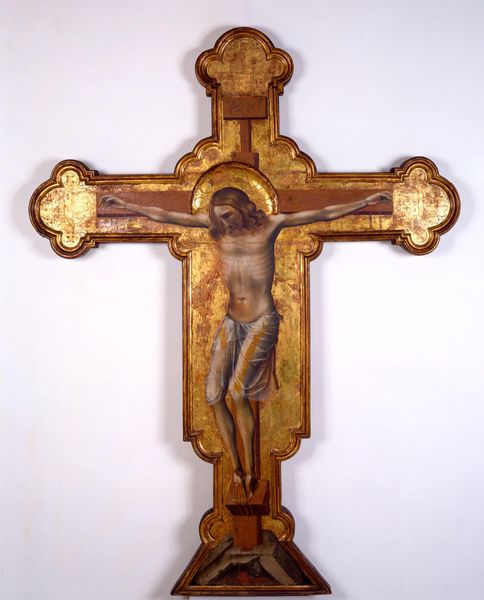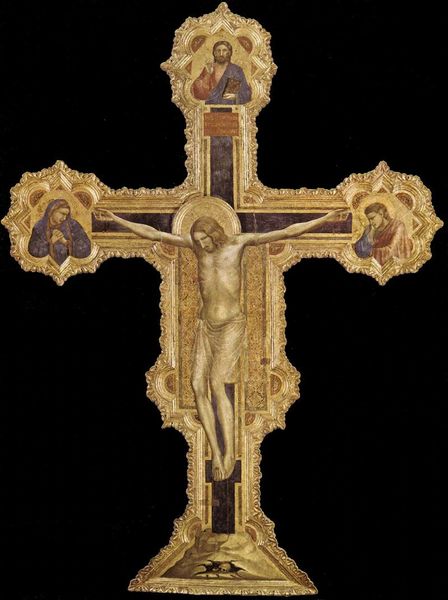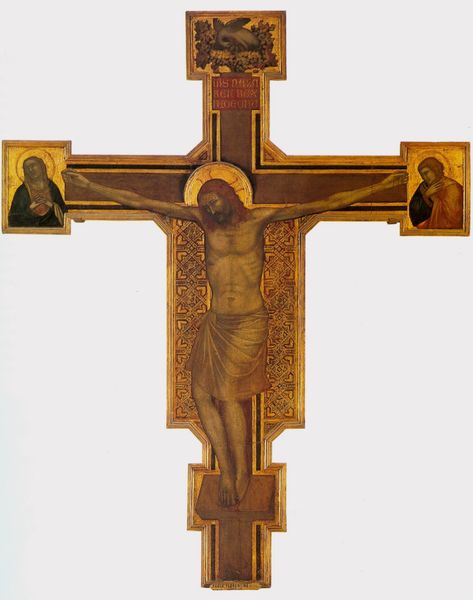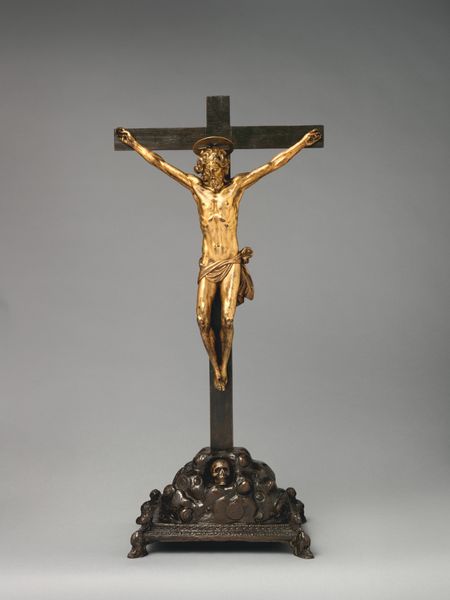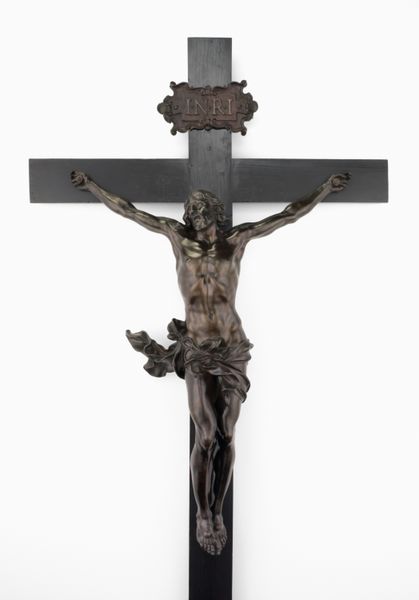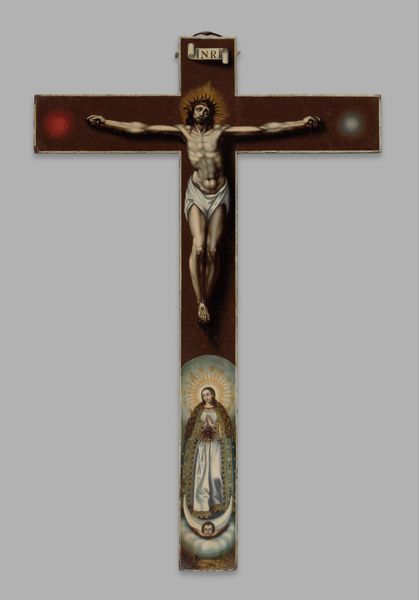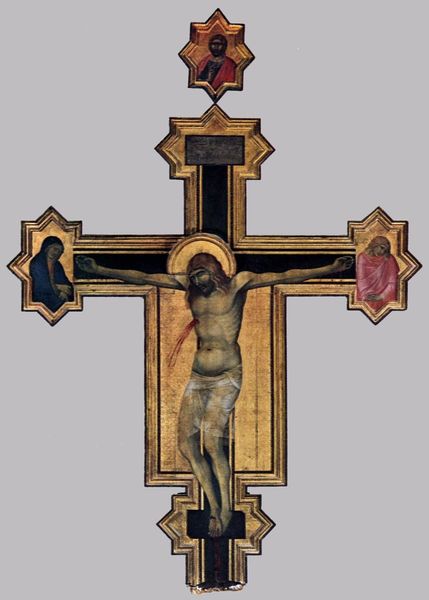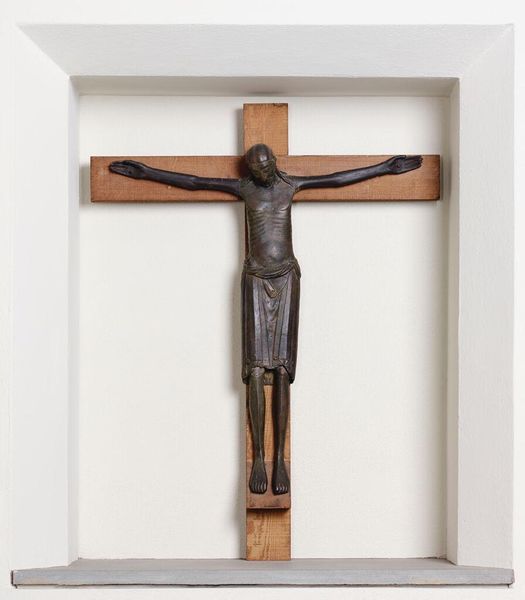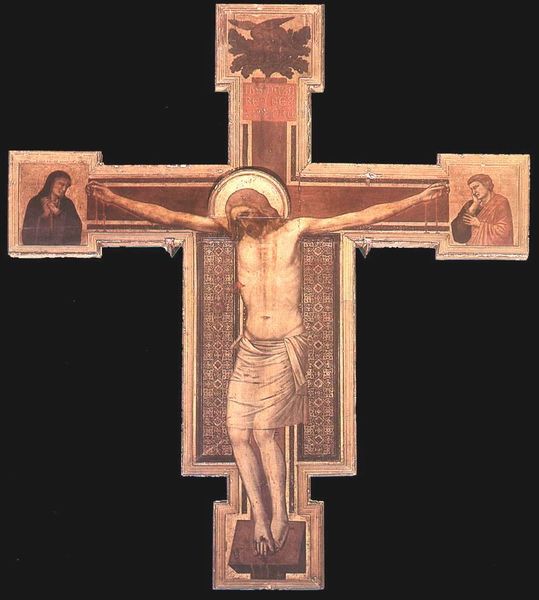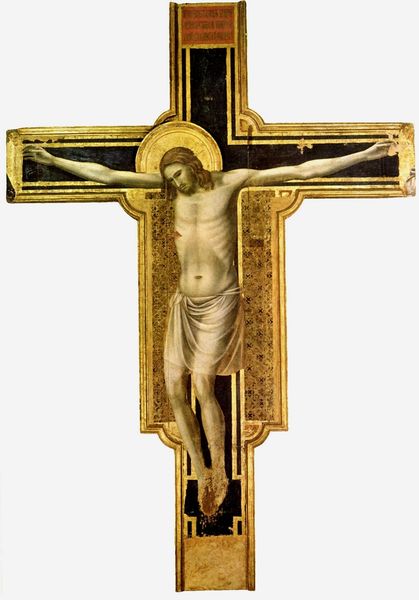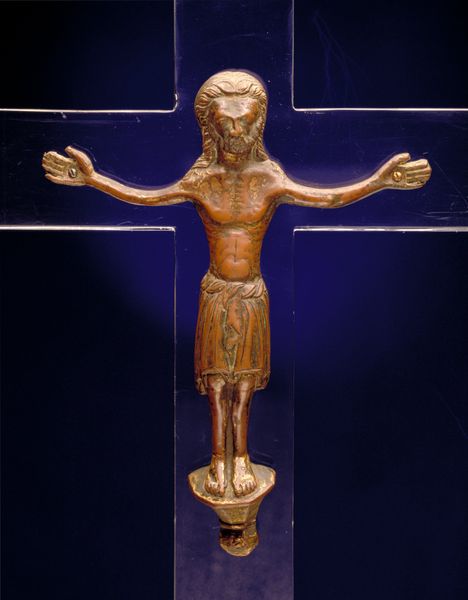
brass, sculpture, wood
#
brass
#
medieval
#
sculpture
#
figuration
#
sculpture
#
wood
Dimensions: 12 5/16 × 5 11/16 × 1 in. (31.27 × 14.45 × 2.54 cm)
Copyright: Public Domain
This crucifix was created by an artist from Kongo using wood, brass, and copper. The object presents a stark, linear structure. Its vertical and horizontal axes intersect to form a rigid cross. This is softened by the patinated brass, which gives it a tactile, human quality. The figure of Christ is centrally positioned, its copper hue a focal point against the darker wood. However, what destabilizes this familiar Christian symbol are the two smaller figures flanking the crossbeam. They are rendered in a style distinct from the European-influenced Christ figure. Do they represent spirits, ancestors, or perhaps a visual assertion of Kongo cosmology? In their positioning, these figures challenge the singular narrative of the crucifixion. They transform the cross from a symbol of solely Christian suffering into a complex intersection of belief systems. This interplay invites us to consider the cross not as a fixed icon, but as a site of syncretism. It marks the fusion of different cultural and spiritual meanings.
Comments
minneapolisinstituteofart almost 2 years ago
⋮
The Kingdom of Kongo, in central Africa, officially became Christian in the late 1400s, after the baptism of its king. This opened the door to Catholic missionaries, and the Christian ideas and icons that began circulating through the kingdom soon found their way into Kongo art and religious thought. The crucifix was the foremost of these icons, a potent symbol of the new faith that happened to mirror an indigenous cosmogram, a cross-like symbol conveying the Kongo concept of a two-way passage between the world of the living and the world of the dead. These two crucifixes from different centuries were powerful aids to piety and ritual. The oldest example is made entirely of metal, while the other one combines brass and wood. This wood is most likely not original but has been replaced in the past. The small figures in postures of prayer on the cross-bar and the bottom of the crosses are Kongo inventions, possibly representing mourners or ancestors.
Join the conversation
Join millions of artists and users on Artera today and experience the ultimate creative platform.
